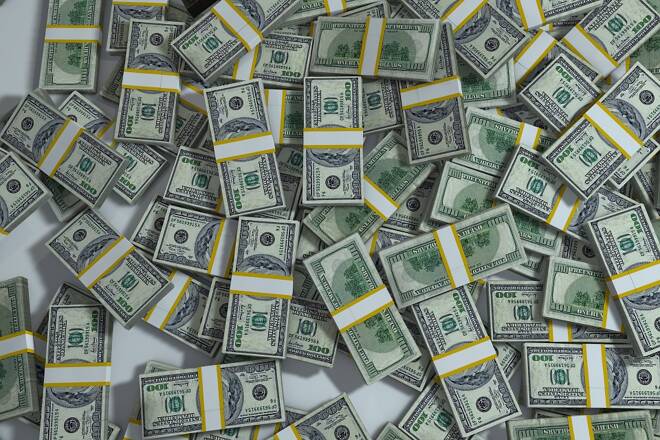Advertisement
Advertisement
U.S. Dollar Rebounds after Rise in U.S. Producer Inflation
By:
The U.S. Dollar rebounded on Thursday after being pressured most of the week. The catalyst behind the rally was a report showing a rise in U.S. producer
The U.S. Dollar rebounded on Thursday after being pressured most of the week. The catalyst behind the rally was a report showing a rise in U.S. producer inflation. This news somewhat offset the weakness caused on Wednesday by the U.S. Federal Reserve monetary policy meeting minutes that showed policymakers were concerned about the impact of low inflation on the economy.
The minutes from the September Fed meeting showed that many Federal Open Market Committee members still believed that another rate increase this year “was likely to be warranted, but there were a few members who said additional tightening depended on upcoming inflation data.
On Thursday, the Greenback was underpinned against a basket of currencies after the Labor Department said its producer price index for final demand increased 0.4 percent last month after rising 0.2 percent in August.
The September U.S. Dollar Index was also supported by a report from the German paper Handelsblatt that said the U.K. could remain in the European Union without voting rights for another two years. This news weakened the Euro which makes up about 57 percent of the dollar index.
Earlier in the week, the EUR/USD was supported after Catalonia stopped short of formally declaring independence from Spain, putting a floor under the common currency.
Economic News
Weekly unemployment claims fell to a more than one-month low last week as the jump in claims in Texas and Florida from Hurricanes Harvey and Irma continued to subside.
Federal Reserve Governor Lael Brainard said on Thursday that the U.S. central bank is struggling to understand a “material” decline in the trend of inflation and so far the most common explanations seem off base.
“We have seen a reduction in the underlying trend rate of inflation that is material,” and the cause remains “a bit of an open question,” Brainard said during a discussion at the Peterson Institute for International Economics.
Brainard further added, “I don’t think global factors in itself, explains what is going on in the inflation process domestically.”
Federal Reserve Governor Jerome Powell said the normalization of monetary policy in the U.S. and other advanced economies should be manageable for emerging markets.
“The most likely outcome is that the challenges posed to emerging markets by the normalization of global financial conditions will be manageable,” he said.
Powell went on to add that vulnerabilities in emerging markets remain below crisis-prone periods in decades past, and that capital flows have been moving in line with fundamentals.
Gold
Gold traders ignored the rebound in the U.S. Dollar on Thursday to finish at more than a two-week high as the focus for traders shifted to U.S. inflation figures due on Friday which are expected to give more clues on monetary policy.
After rallying most of the week, gold investors are looking for a little direction. Stronger consumer inflation data on Friday could create resistance for the precious metal along with increased demand for higher risk assets, a firmer U.S. Dollar and rising Treasury yields.
Geopolitical uncertainty over North Korea and political issues in Washington and parts of Europe could underpin gold prices as well as weaker-than-expected consumer inflation data.
Crude Oil
U.S. West Texas Intermediate and international-benchmark Brent crude oil finished down on Thursday, but off its lows after the U.S. Energy Information Administration reported a larger-than-expected decline in U. S. inventories and a falloff in weekly production on Thursday.
According to the EIA, crude inventories fell by 2.7 million barrels in the week to October 6 compared with analysts’ expectations for a decrease of 2 million barrels. Distillate stocks fell by 1.5 million barrels, short of expectations for a drop of 2.2 million barrels.
In other news, the International Energy Agency said on Thursday demand for OPEC oil would be 32.5 million barrels per day next year – around 150,000 bpd lower than the cartel pumped last month.
About the Author
James Hyerczykauthor
James Hyerczyk is a U.S. based seasoned technical analyst and educator with over 40 years of experience in market analysis and trading, specializing in chart patterns and price movement. He is the author of two books on technical analysis and has a background in both futures and stock markets.
Advertisement
